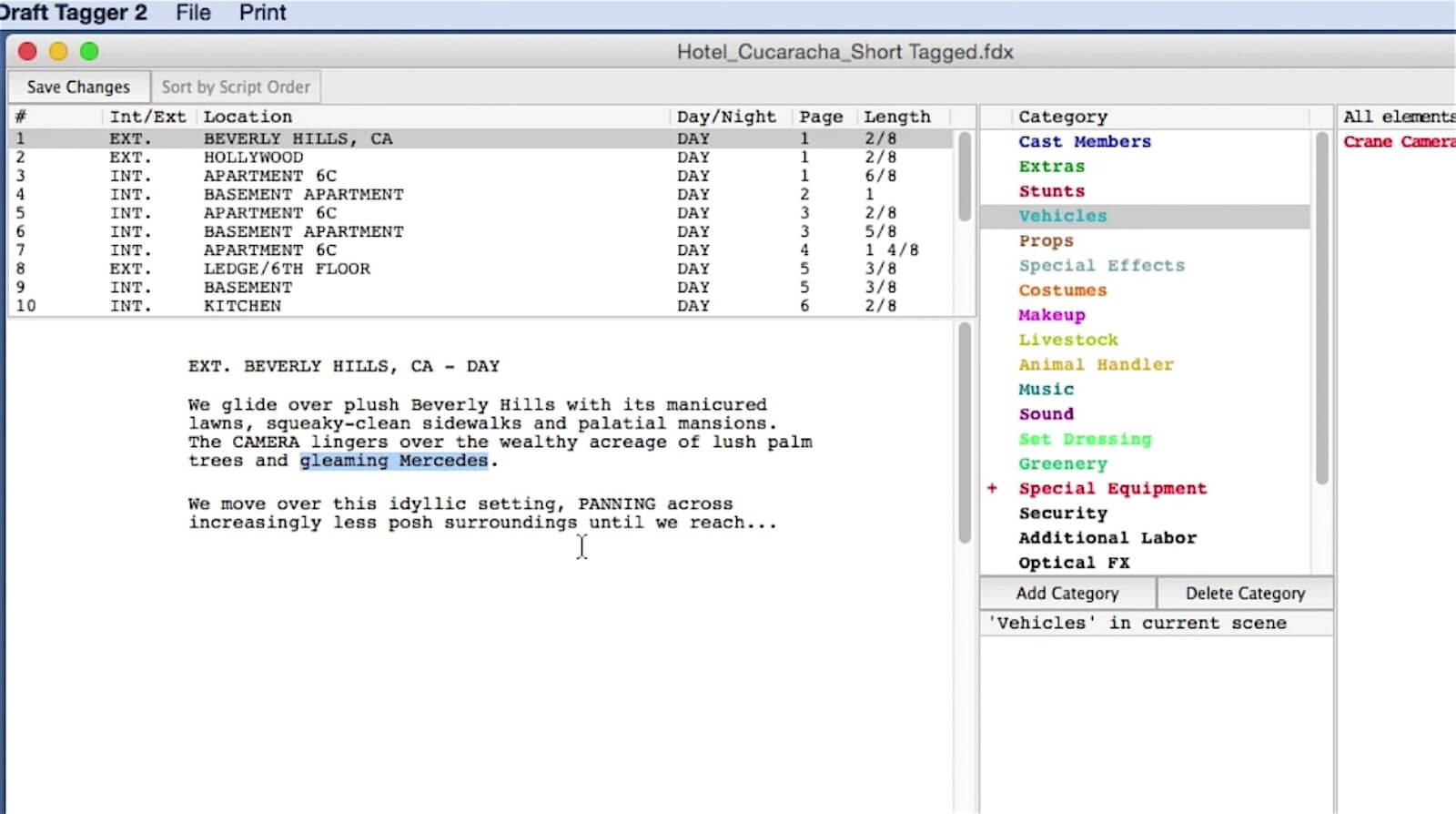
There you see in the Elements menu it says, “Scene Heading”. We can either choose or write, but before you do that let’s take a look at the top of the screen. TAB again, Final Draft automatically creates the dash that is standard in between the location and time of day and asks us which time of day we want to use. Let’s type something, for example, “GARAGE”. Now we can either continue to write “EXT.” Or just press TAB, and Final Draft will complete the suggestion by itself and waits for our next entry, the location. If you want to know more about that check out the video about Smart Type. These pre-determined text entries are stores in so-called “Smart Lists” that can also individually be customized. Final Draft automatically offers to type “EXT.” Because it knows that at the beginning of a scene heading you most likely will want to write either “EXT.” Or “INT.”. Or INT., the location, and the time of day. We already saw that a scene heading needs to consist of three elements minimum: EXT. We have an empty page here, so the first thing we need to create is a scene heading. Most screenplay writing programs, and Final Draft is no exception, mainly use two keys to jump between the different script elements while writing.
#Final draft tagger clear element how to#
In this article we’ll look at the different screenplay elements that we’ve already seen before and see how to create them and jump from element to element quickly to keep in the writing flow. Protected tags can only be deleted by using GitLab either from the UI or API.How To Format Your Script In Final Draft 12 On the confirmation dialog, enter the tag name and select Yes, delete protected tag.Next to the tag you want to delete, select Delete ( ).On the left sidebar, select Repository > Tags.On the top bar, select Main menu > Projects and find your project.You must have at least the Maintainer role in your project.You can manually delete protected tags with the GitLab API, or the

Users can still create branches, but not tags, with the protected names. Like stable-* to match multiple names, like stable-v1 and stable-v2.

To protect a tag, you must have at least the Maintainer role.

#Final draft tagger clear element update#


 0 kommentar(er)
0 kommentar(er)
